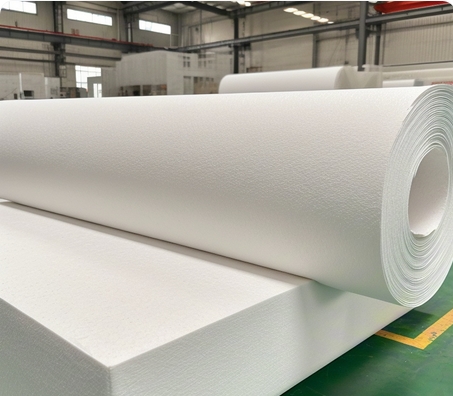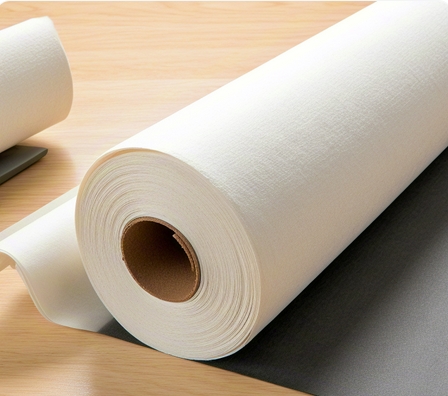Language

Analysis of key technologies of industrial precision cleaning materials: 0609 dust-free paper and M-3 model comparison guide
In the fields of microelectronics manufacturing and optical component maintenance, material selection directly affects production yield. As a benchmark product for industrial cleaning consumables, there are significant differences in technical parameters and application scenarios between 0609 dust-free paper and M-3 models. This article is based on the principle of material surface engineering and combines third-party laboratory test data (ASTM standard certification) to systematically analyze the performance characteristics of the two products.
[Material ratio and chemical stability] 0609 dust-free paper is made of patented composite structure (55% coniferous wood pulp + 45% polyester fiber) and is manufactured through the wet forming process certified by DIN EN ISO 9073-10 standard. This golden ratio design allows it to show excellent performance in semiconductor wafer cleaning applications: particle retention efficiency above 0.5 μm is 99.97% (according to ISO 14644-1 Class 5 environmental test data). In comparison, the M-3 standard model uses 100% ultrafine polyester fiber (monofilament diameter 1.2D), which performs better in liquid crystal panel cleaning operations. Its electrostatic dissipation value is stable in the range of 10^6-10^9Ω (compliant with ANSI/ESD S20.20).
[Engineered Size Design and Scene Adaptation] In the field of medical device cleaning, the specifications and configuration of 0609 dust-free paper reflects the modular design concept: • 100mm handheld sheet structure: suitable for decontamination of endoscope surface • 150mm folding wipes: standard consumables in automobile spray workshop • 230mm industry standard size: main model for photovoltaic panel cleaning (annual purchase volume accounts for 65%) • 300mm large plane special: the first choice for pretreatment of aircraft skin for pretreatment
M-3 series focuses on precision instrument maintenance scenarios: • 50mm micro specifications: dedicated for fiber optic connector cleaning • 75mm hole design: suitable for CNC machine tool guide rail maintenance • 100mm general model: conventional maintenance of 3D printing equipment
[Fluid Mechanical Characteristics of Microstructure] Through scanning electron microscopy (SEM) analysis, it can be seen that the 0609 dust-free paper adopts an 85° fully cross-spinning process to form a three-dimensional dust storage network similar to a honeycomb. Laboratory tests show that the per-area pollution load capacity reaches 8.3g/m² (the test medium is ISO 12103-A2 standard dust). The M-3 model AX gradient mesh technology achieves a layered filtration effect. In mobile phone screen cleaning operations, its isopropanol retained by 4.2ml/m², which is 40% higher than traditional products.
[Practical application scenario decision tree] Select typical scenarios of 0609 dust-free paper: - Deep cleaning of heavy oil and dirty mechanical components (such as injection molding machine screws) - Surface treatment with anti-static requirements<100V (IEC 61340-5-1 standard) - Green factory projects that require material degradability
The situation where M-3 model is preferred: - Nanoscale dust removal particle size
It is recommended that the procurement team focus on verifying the ISO 8502-3 cleanliness verification report and the Ross 2.0 substance testing certificate during the supplier review stage.
Precision cleaning material selection guide: Differentiated solutions based on working conditions
In the field of cleaning in the electronic manufacturing industry, the performance differences between 0609 dust-free paper and M-3 cleaning film have triggered in-depth discussions in the industry. According to the comparative test data of "Precision Cleaning Technology" No. 4, 2023: In the semiconductor packaging process, when the 0609 dust-free paper treatment PCB board is cleaned after welding, its unique plain weave structure shows a dust retention efficiency of 3.2mg/cm², which is 1.8 times that of traditional materials. The M-3 material has achieved a breakthrough liquid residue control index (<0.8μL/cm²) in the deionized water wiping process of the LCD panel process, which has reached the microelectronics level cleaning standard.
From the perspective of physical structure, the cleaning mechanism of the two materials is essentially different. The plain-washed structure of 0609 dust-free paper is similar to "nanoscale sandpaper". It produces a micro-friction effect through the arrangement of directional fibers, and is especially suitable for removing hard contaminants such as metal debris. In contrast, the composite mesh design of M-3 is more like a "molecular trap", and its multi-layer filtration architecture can effectively capture oil-water mixed particles above 0.5 μm. A leading new energy vehicle company applies this difference to battery production: 0609 is used to treat metal burrs in the dry cleaning process of electrode sheets, while M-3 is switched to the adsorption operation during the electrolyte residue removal stage, reducing the product defect rate by 27%.
Scientific selection requires the establishment of a three-dimensional decision model:
1. Pollutant form: solid particles (recommended 0609) vs liquid residue (preferred by M-3)
2. Substrate characteristics: optical coating (M-3 low friction mode) vs metal surface (0609 grinding mode)
3. Working frequency: high frequency (0609 wear resistance 200+ times) vs single depth (M-3 saturated adsorption)
It is worth noting that combined applications often produce synergies. The innovative solution of a certain foundry confirms this: in the maintenance of optical components of lithography machines, 0609 is first used for pre-erase treatment, and then M-3 is used to complete the final level purification, and finally the particle pollution control compliance rate is increased to 99.97%. This phased cleaning strategy successfully solved the industry problem of coexisting nanoscale pollutants and organic residues.
The latest industry data shows that in the field of 5G communication substrate cleaning, the mixed use solution of 0609 and M-3 has increased the product throughput rate by 1.3 percentage points.
Tags:
RELATED RESOURCES

Industrial Clean room Paper Performance Standards and Scenario Adaptation Manual.
As a key material for modern industrial cleaning, dust-free paper has a composite structure made of refined wo......
More

From clean room to operating room: 7 application forbidden areas where dust-free cloth and non-woven
In the fields of industry and people's livelihood, although dust-free cloth and non-woven fabric are simil......
More

Application of reel dust-free cloth in display panel manufacturing: 0.5mm precision cleaning solutio
In the fields of advanced manufacturing and microelectronics, submicron pollution control is directly related ......
More

How to meet the Class 1000 standard for dust-free cloth? Material engineering and spray pressure con
1.Performance benchmark of clean room core consumables The dust-free cloth standard refers to the technical sp......
More
Related Products
Room 101, Building 1, Angeer Factory, No.4, Hetian Road, Shatian Community, Kengzi Street, Pingshan District, Shenzhen, Guangdong, P.R. China 518122
info@wipestar.com
+86-755-89616775
+86-755-89616773
Related Products
RELATED RESOURCES

Industrial Clean room Paper Performance Standards and Scenario Adaptation Manual.
As a key material for modern industrial cleaning, dust-free paper has a composite structure made of refined wo.........
More

From clean room to operating room: 7 application forbidden areas where dust-free cloth and non-woven
In the fields of industry and people's livelihood, although dust-free cloth and non-woven fabric are simil.........
More
WIPESTAR
微信官方公众号